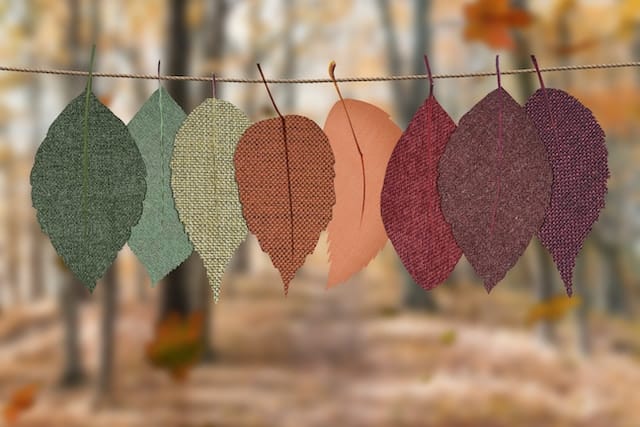When choosing fabrics for your home or office, consider sustainable options. This includes materials like repurposed wood and organic cotton.
Avoid fabrics that use harmful chemicals and dyes during production. Look for OEKO-Tex certification to ensure your textiles are free from regulated and unregulated toxic chemicals. Incorporating organic elements like wood and stone can also help maintain a healthy level of indoor air quality.
Sustainable design can enhance occupant health by optimizing natural light and vistas, offering access to the environment, and designing spaces that encourage physical exercise and mental wellness.
Reduced Carbon Footprint
Using eco-friendly fabrics is one of the easiest ways to help reduce humans’ impact on the environment. The production of cloth involves many chemicals and harmful substances, which can produce greenhouse gases and have a negative environmental impact. However, the sustainable fabric is made of natural materials that are less damaging to the environment during all stages of production and usage.
Cotton, for example, is notorious for having a large carbon footprint, releasing a lot of CO2 during the growing process. It also requires much water to grow and manufacture, harming the environment. By opting for a material like hemp, which is both renewable and biodegradable, you can cut down on the environmental impact of your textiles.
Moreover, purchasing sustainable textiles from brands that prioritize sustainability supports the economy of your local area. These companies will likely support industries like organic farming, natural dyes, and eco-friendly textile manufacturing, which can provide stable jobs and good working conditions for local artisans. These brands are also more likely to pay fair wages for their employees.
Increased Lifespan
Investing in eco friendly textiles gives you a quality product that will last longer than traditional fabrics. You will have to replace them less frequently, saving you money in the long run.
Sustainable fabrics are usually made with hypoallergenic materials that are odor, dust-mite- and bacteria-resistant, biodegradable, and fire-retardant. They will also be softer and more durable than their synthetic counterparts.
Other eco-friendly interior design strategies include reclaimed wood, which reduces deforestation and minimizes energy consumption in manufacturing. Similarly, choosing recycled metal and glass can help decrease waste generation and pollution.
Additionally, many governments and utility companies offer incentives, rebates, or tax credits for homeowners who adopt green practices. These can offset the initial investment of energy-efficient upgrades and eco-friendly features, reducing costs.

Reduced Waste
As sustainable ideals continue to surge in popularity, consumers are beginning to expect green practices from brands. This can be a great way to gain the loyalty of customers and potential clients.
By using eco-friendly textiles, interior designers can help clients create a healthy home for the environment and its occupants. Using natural materials reduces the amount of pollutants in the air and eliminates the need for chemicals that are harmful to the environment and skin.
Sustainable textiles are also biodegradable and can be discarded without harming the environment. Homeowners can positively impact the environment and avoid the waste of synthetic materials by choosing products made from bamboo, straw, jute, hemp, cotton, wool, and other eco-friendly fabrics.
It is important to remember that not all eco-friendly fabrics are created equal. Some, like leather, are not eco-friendly due to the harsh production process that requires tanning and bleaching. You can avoid this issue by choosing an alternative like Pinatex, a pineapple fabric, and still get a beautiful interior design.
Better Health
Using eco-friendly textiles for your interior design can help improve the air quality in your home. For example, when you choose organic cotton, jute, or wool, you use hypoallergenic materials that can absorb odors and moisture, keeping the environment free from dust mites and other allergens. The same goes for flooring—replace vinyl with wood, cork, or linoleum made from recycled plastics and natural cellulose like jute or cotton.
Many eco-friendly fabrics are odor, allergy and bacteria-resistant, and biodegradable. They also have lower VOC levels, meaning fewer toxic chemicals are released into the air while woven or printed.
Some of these include Nullarbor fabric (made from soybeans, Tencel, and hemp) and Woocoa (made from coconut and bamboo byproducts). They also have the highest Cradle to Cradle rating. Other eco-friendly fabrics include abacus upholstery for furniture and panels, woven from 100 percent post-consumer recycled polyester from both consumer and industrial sources, and repurposed soda bottles.
Conclusion
Utilizing eco-friendly materials in your interior design plans is a great way to make your home or office more sustainable, aesthetically pleasing, and often a better financial investment.
Considering the amount of furniture thrown away each year, the cost of recycling it, and the cost of replacing it, investing in eco-friendly materials may save you money in the long run.
When choosing fabrics, look for those certified as sustainable or eco-friendly and consider the cradle-to-gate life cycle of each textile you’re considering using in your project. This will ensure that the products you purchase are genuinely eco-friendly.














Leave a Reply